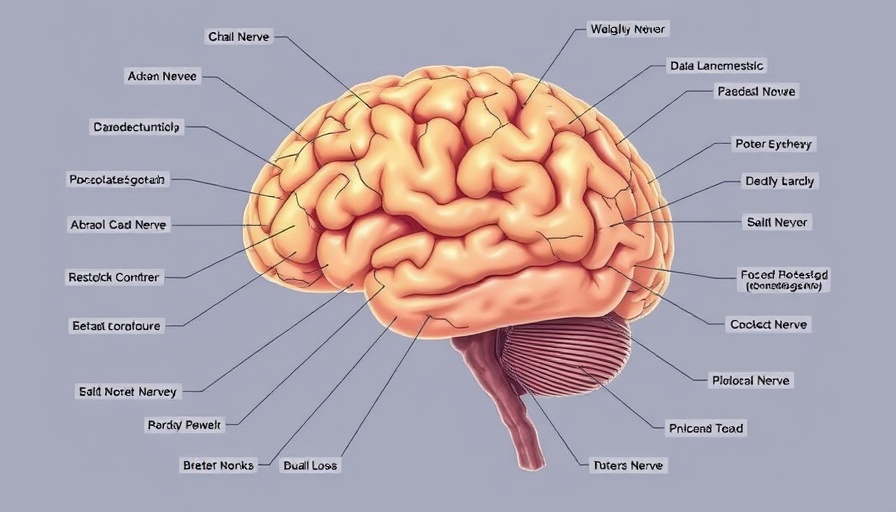
Unlocking the Brain's Role in Weight Loss
The recent study from the University of Gothenburg sheds new light on the connection between weight loss and nerve cells in the brain, notably focusing on the drug semaglutide. This GLP-1 receptor agonist has already established itself as a key player in the treatment of obesity and type 2 diabetes, reducing food intake and promoting fat loss. However, the side effects, including nausea and muscle loss, have raised concerns, driving researchers to explore the underlying mechanisms at play.
How Semaglutide Works at the Neural Level
In the groundbreaking study published in Cell Metabolism, researchers monitored the brain activity of mice treated with semaglutide, pinpointing which nerve cells were activated during the process. Remarkably, they found that by selectively stimulating these activated cells, they could mimic the drug's appetite-reducing and weight-losing effects without administering semaglutide itself. In cases where these specific nerve cells were rendered inactive, the mice lost the benefits of the drug while still experiencing its adverse side effects.
Potential for Targeted Treatment Solutions
According to Júlia Teixidor-Deulofeu, the lead author of the study, identifying the specific group of nerve cells governing the beneficial effects of semaglutide opens up new avenues for treatment. By being able to potentially target only these cells, researchers hope to develop therapies that maintain the weight loss benefits while significantly cutting down on uncomfortable side effects. This targeted approach could revolutionize the way obesity and related metabolic conditions are treated.
The Relevance of Neural Mechanisms in Weight Management
Understanding the role of the dorsal vagal complex in appetite and energy regulation is crucial, as it provides insight into how our brains control body weight. This knowledge is particularly relevant as prescriptions for semaglutide and other GLP-1 receptor agonists spike, as they are not only seen as solutions for weight loss but are also being investigated for various conditions including substance use disorders and neurodegenerative diseases.
Broader Implications for Health and Wellness
With the rise of such scientific advances, it’s imperative for individuals to integrate a holistic approach to health and wellness into their lives. This includes understanding lifestyle choices, nutrition, community wellness initiatives, and how alternative approaches like naturopathy can supplement conventional treatments. The findings from this study might imply that through a combination of science and lifestyle medicine approaches, individuals can achieve optimal health and wellness.
Community Health Initiatives: Empowering Change
As the health and wellness landscape evolves, it’s essential for communities to spark discussions around innovative treatments like semaglutide. Local health and wellness centers could adopt integrated methodologies, encouraging a blend of traditional and alternative medicine practices. In San Antonio, for instance, initiatives could focus on educating the public about these advancements while promoting healthy living.
The Path Forward: Actionable Insights for Better Living
As research advances, it’s essential to remain proactive about health. Incorporating nutritional supplements, engaging in educational health and wellness events, and pursuing knowledge about alternative medicine may empower individuals to make informed decisions about their health journey. The work being done at the University of Gothenburg is just a glimpse of how understanding our brains can lead to better health outcomes.
Conclusion: Embracing a New Era of Weight Loss Solutions
The findings from this study enable us to rethink our approach to weight management and metabolic health. With potential for targeted treatments on the horizon, it’s crucial to remain educated and engaged. As health and wellness become central to our lifestyles, understanding how to lose weight healthily and naturally, alongside conventional treatments, can set us on the path to achieving sustainable health.
 Add Row
Add Row  Add
Add 




 Add Row
Add Row  Add
Add 


Write A Comment